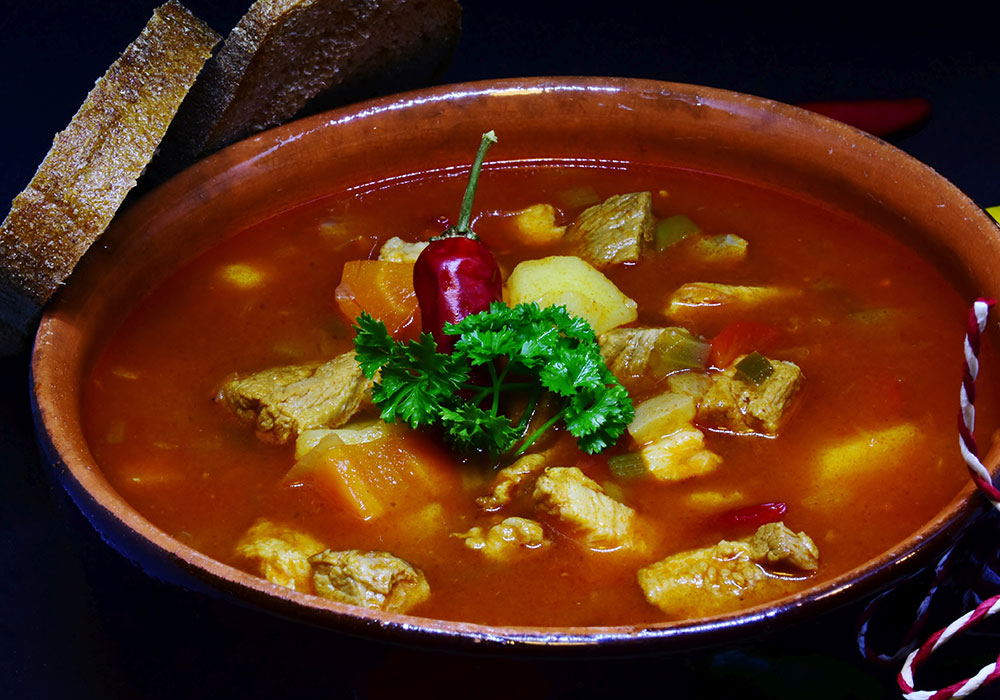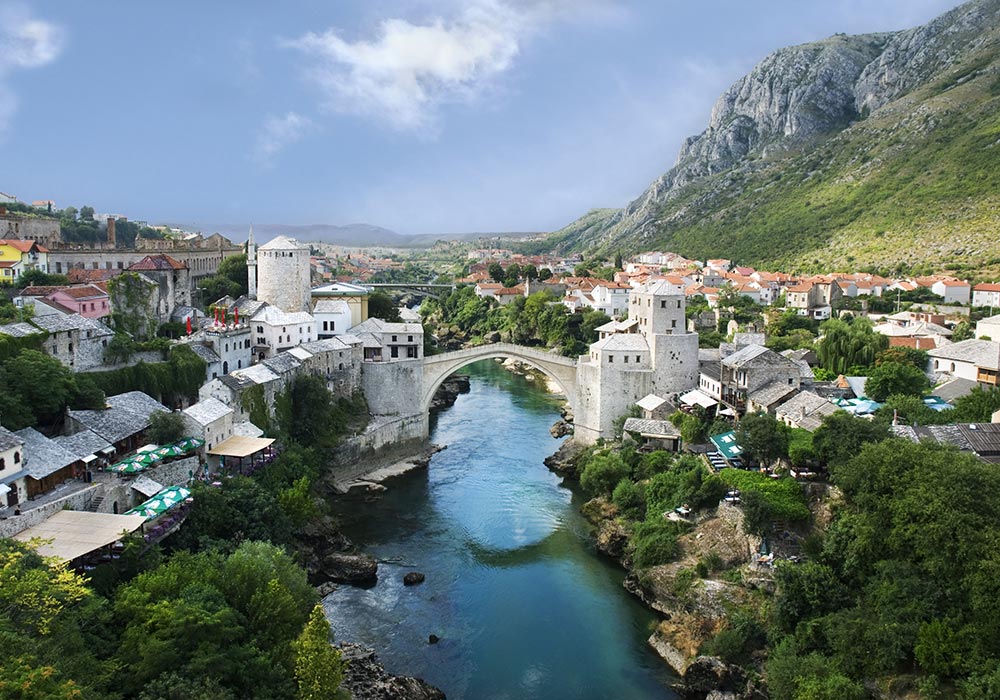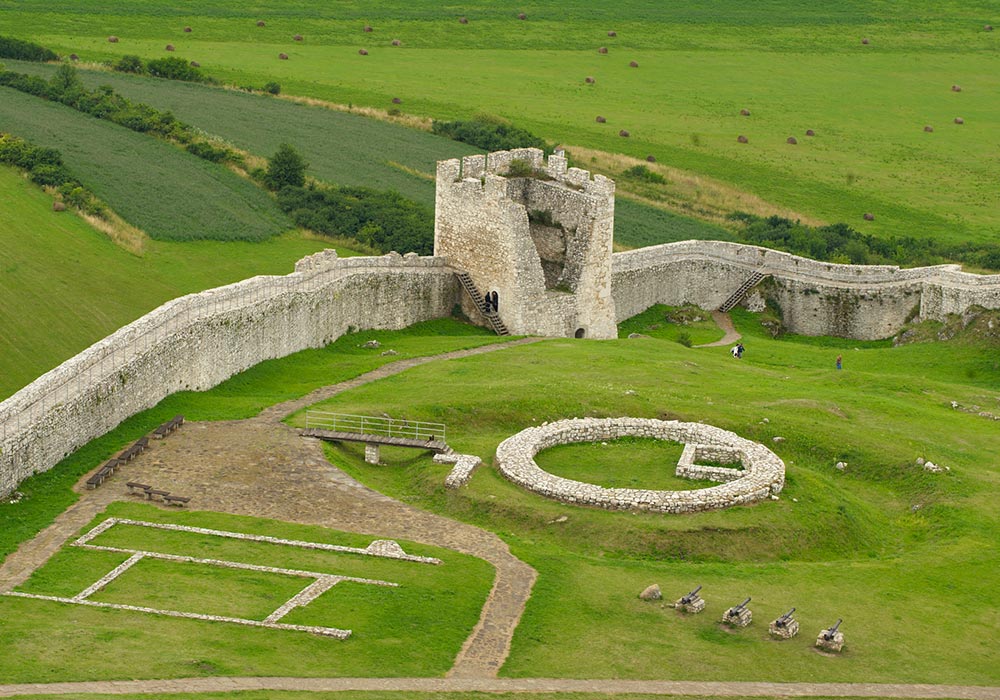This program is jointly organized with our partner, Road Scholar.
SAILING ALONG PRISTINE TURQUOISE WATERS OF THE ADRIATIC
SEA Croatia by local transportation
- Information
- Tour Plan
- Location
- Gallery
- Additional Info
- Similar Tours
What's included
- Deluxe air-conditioned vehicles and tickets for the public transport
- In-depth sightseeing program
- Entrance fees per itinerary
- Professional local guiding in English
- All taxes and fees
- Accommodation for 10 nights in single or double rooms in 4* star hotels
- 9 breakfasts and 10 meals
- Departure Taxes or Visa handling fees
- Excess baggage charge
- Personal expenses
- Visa arrangements
- International flights
- Free time entrance tickets to monuments and museums
- Day 1 - Arrive, Check-in, Orientation, Welcome Dinner
- Day 2 - Split, Free Time
- Day 3 - Island of Brac
- Day 4 - Island of Hvar
- Day 5 - Islands of Hvar & Korcula
- Day 6 - Korcula, Free Time
- Day 7 - Korcula & Peljesac Peninsula
- Day 8 - Dubrovnik, Free Time
- Day 9 - Konavle Region, Farewell Dinner
- Day 10 – Departures
Meet and Greet
After arrival meet the group at orientation meeting and then enjoy welcome dinner in Split.
Who SPLIT the Roman Empire?
Take an expert-led walking field trip starting at the hotel, through Diocletian's Palace. The palace and fortress was built by Roman Emperor Diocletian shortly after abdicating his throne at the turn of the 4th century, and today is considered one of the most significant living monuments of the Roman era. What remains of the palace is now the old town of Split. Explore the Peristyle, the Cathedral, former gates and rooms of the palace, as well as majestic statues by Ivan Mestrovic, the greatest 20th-century Croatian sculptor.
At a local restaurant, enjoy a light lunch.
This afternoon is free to enjoy at your leisure. For dinner explore local fare on your own
Evening: Lecture by local expert about Croatia.
Tracking down the Stones of the White House
Depart the hotel on foot to the ferry port (15 minute walk). Take the morning ferry to the Island of Brac, famous for its beautiful white stone. The same white stone was used to build the White House! From the port town of Supetar, drive via motorcoach to Pucisca. Visit its local stonemason school where you will learn how the stone is cut. End the morning with a drive up to Vidova Gora, the highest peak on all of the Adriatic islands (2,552 feet). Enjoy the spectacular view from the top.
We will have lunch at a farmhouse in the forest; a nice example of the local stone architecture. Taste a local lamb specialty prepared in the traditional way by a local family.
In the afternoon we will drive to Skrip, the oldest settlement on Brac, to learn about the history of the island. Visit the island's small museum where you will see photographs, books, and other archaeological findings. We will then return to Supetar and take the ferry back to Split.
Explore local fare on your own for dinner.
Croatian Madeira
Attend an expert-led lecture about the maritime history of Dalmatia at the hotel in the morning. Then enjoy some free time in Split.
Explore local fare on your own for lunch.
In the afternoon, depart the hotel on foot to the ferry port (15 minutes. Your luggage will be transferred from the hotel to the ferry by car). Take the fast ferry to the island and port town of Hvar (1 hour), considered the queen of Dalmatia and the "Croatian Madeira." Even though the climate is very dry (the island boasts the longest days with the most sun in the country) it is still very green and covered in fields of lavender, rosemary and heather. Enjoy a short expert-led walking field trip of the area. Learn about the town's time under Venetian rule, and see the impressive stone carvings in the old architecture, courtesy of the local stonemasons who once lived here. Enjoy some free time. If you wish, you may explore the Gothic palaces, the city wall, and the Arsenal building, which housed the first public theatre in Europe. Check-in at the hotel.
Have dinner in the hotel.
Visit one of the Oldest Towns in Europe
After you check out of the hotel, explore the island of Hvar by motorcoach with commentary, including a panoramic view from the Spanjola Fortress, overlooking the city and the Pakleni islands. Then take the historical road to Stari Grad, the oldest town in Croatia (the winding old road offers some of the most beautiful scenes of the island, providing excellent photo opportunities which we will take advantage of). Stari Grad sits where the deep blue bay and the green vineyards and olive groves meet.
We will have lunch en route to the ferry at a local restaurant in Vrisnik, tasting some local prsut (ham), cheese and wine.
In the afternoon, we will take the fast ferry to Vela Luka, on the Island of Korcula (1 hour). Separated from the mainland by a narrow channel, Korcula was populated very early on and served as an important maritime base. The bustling main town includes restaurants, cafés, galleries, a theater, and the island's Old Town, with its charming narrow streets and Venetian Renaissance-styled architecture. Drive via motorcoach along the island to the hotel in the town of Korcula. Arrive at Hotel Liburna and check in.
We will have dinner in the hotel dining room.
Marco Polo’s Origin
After arriving in Korcula, we walk to explore the Old Town, which, according to legend was founded by the Trojan elder Antenor. Local legend also claims it as the birthplace of the great explorer Marco Polo. This historic town sits on a fortified point jutting out into the sea. Its buildings of stone with red tile roofs create one of the most picturesque images along the coast. As we walk, observe the herringbone pattern of narrow walkways adorned with elegant houses and palaces. Among the most significant sites we will visit the St. Mark’s Cathedral and the Town Museum presenting cultural and commercial milestones from prehistory to the present with collections of traditional crafts including stone masonry and shipbuilding as well as household objects that represent everyday life.
We will have lunch at a local restaurant.
Afternoon will be free and for dinner explore local fare on your own.
Windy Channel full of Miracles
In the morning, enjoy some free time to explore Korcula on your own. Immerse yourself in Korcula's narrow walkways and discover adorned palaces and elegant houses. In the late morning, depart by boat to Peljesac (20 minutes). Then drive to Ston via motorcoach.
Have lunch at a local restaurant in Ston, enjoy the cuisine of the area including oysters.
After lunch, see the famous walls in Ston, which have protected the Peljesac Peninsula throughout history, and visit the Salt Pans, where traditional methods are still being used to extract salt from the Adriatic. Board the motorcoach and drive to Dubrovnik to check in to the hotel.
Explore local fare on your own for dinner.
One of the most Prominent Tourist Destinations in the Mediterranean Sea
Learn about present day Croatia during a lecture by a local expert. Then take a public bus to Dubrovnik, a UNESCO World Heritage Site, for a walking field trip. The famous city walls surround Dubrovnik's incredible old town, where the city's history and culture thrive harmoniously with present-day life. See such sites as the Rector's Palace, Franciscan Monastery, Onofrio Fountain and St. Blaise's Church. To reach the old town, we will use public transport.
The rest of the day is free for your independent exploration.
Olive Oil and its Secrets
Start your day with some free time to relax, enjoy the sea or pack. Explore the Konavle Region which is located in the most south-eastern corner of Croatia. Visit a local olive oil tasting room where you will learn about the production of local olive oil. Taste their local products.
Enjoy light lunch at the olive oil tasting room.
Visit the small town of Cavtat, once known as Epidaurus, and the administrative center of Konavle. The town is situated in a beautiful bay. Those who are ready for a short climb will visit the cemetery of the town, home to the Mausoleum of the Racic family. The Mausoleum was designed by the best known Croatian sculptor, Ivan Mestrovic. In the late afternoon we’ll visit a local family restaurant where we will enjoy our farewell dinner.
Doviđenja!
Airport transfers.
More about Croatia
A country of striking natural beauty with a stunning Adriatic coastline, Croatia is again very popular as a tourist destination. Precariously poised between the Balkans and central Europe, this land has been passed between competing kingdoms, empires and republics for millennia. If there's an upside to this continual dislocation, it's in the rich cultural legacy that each has left behind. Venetian palaces snuggle up to Napoleonic forts, Roman columns protrude from early Slavic churches, and Viennese mansions face off with Socialist Realist sculpture. Excellent museums showcase treasures that cover the gamut of European history, from the prehistoric to the post communist, telling a story that is in equal parts fascinating and horrifying.
The lands that today comprise Croatia were part of the Austro-Hungarian Empire until the close of World War I. In 1918, the Croats, Serbs, and Slovenes formed a kingdom known after 1929 as Yugoslavia. Following World War II, Yugoslavia became a federal independent Communist state under the strong hand of Marshal Tito. Although Croatia declared its independence from Yugoslavia in 1991, it took four years of sporadic but often bitter fighting before occupying Serb armies were mostly cleared from Croatian lands, along with a majority of Croatia's ethnic Serb population. Under UN supervision, the last Serb-held enclave in eastern Slavonia was returned to Croatia in 1998. By early 2003 it had made enough progress in shaking off the legacy of those years to apply for EU membership, becoming the second former Yugoslav republic after Slovenia to do so. Following protracted accession talks, Croatia took its place as the 28th member state of the EU on 1 July 2013.
Croatia's extraordinary island-speckled coastline is indisputably its main attraction. The first thing that strikes you is the remarkable clarity of the water. When it's set against a dazzling white pebbly beach, the water sparkles with a jewel-like intensity in shades of emerald and sapphire. There are long sandy and shingly stretches too – perfect for lazy days spent lounging and devouring trashy holiday novels. If that all sounds too relaxing, there are water-based activities at hand to lure you off your sun lounger – snorkelling, diving, kayaking, windsurfing and sailing, just for starters.
More about Dalmatia
Dalmatia is one of the four historical regions of Croatia, alongside Croatia proper, Slavonia, and Istria. Dalmatia is a narrow belt of the east shore of the Adriatic Sea, stretching from the island of Rab in the north to the Bay of Kotor in the south. The hinterland (Dalmatian Zagora) ranges in width from fifty kilometres in the north, to just a few kilometres in the south; it is mostly covered by the rugged Dinaric Mountains. Seventy-nine islands (and about 500 islets) run parallel to the coast, the largest (in Dalmatia) being Brač, Pag, and Hvar. The largest city is Split, followed by Zadar, Dubrovnik, and Šibenik.
The name of the region stems from an Illyrian tribe called the Dalmatae, who lived in the area in classical antiquity. The tribe was connected with the Illyrian word delme meaning "sheep". Its Latin form Dalmatia gave rise to its current English name. Later, the region became a Roman province, and as result a Romance culture emerged, along with the now-extinct Dalmatian language, later largely replaced with related Venetian. With the arrival of Croats to the area in the 8th century, who occupied most of the hinterland, Croatian and Romance elements began to intermix in language and culture.
After the Medival Kingdom of Croatia fell in 1102, its cities and lands were often conquered by, or switched allegiance to, the kingdoms of the region during the Middle Ages. The longest-lasting rule was the one of the Republic of Venice, which controlled most of Dalmatia between 1420 and 1797, with the exception of the small but stable Republic of Ragusa (1358–1808) in the south. Between 1815 and 1918, it was a province of the Austrian Empire known as the Kingdom of Dalmatia. After the Austro-Hungarian defeat in the First World War, Dalmatia was split between the Kingdom of Serbs, Croats, and Slovenes which controlled most of it, and the Kingdom of Italy which held several smaller parts, and after World War II, the Socialist Republic of Croatia as a part of SFR Yugoslavia took complete control over the area. Following the dissolution of Yugoslavia, Dalmatia became a part of an independent Croatia. Dalmatia is today a historical region only, not formally instituted in Croatian law. Its exact extent is therefore uncertain and subject to public perception.
More about The Balkans
The Balkans is a region that includes countries on the Balkan Peninsula in the southeast of Europe, including most of the former Yugoslavia.
While lately the very word of Balkans may translate to ethnic strife and civil wars in people's minds due to the headlines in the last decade of 20th century (and unfortunately, there is some truth in this perception), Balkans, with its rich, though often turbulent history and wonderful nature, offers much more than that. Charming multicultural towns, impressive monasteries and citadels dotting the hillsides, mighty mountains sprinkled with a liberal dose of beautiful forests and pleasant lakes, and last but not the least a great folk music tradition - coming off both as much joyful and melancholic as it could be - all survived various wars, if sometimes suffered a bit from the atrocities. With hundreds of kilometres of coastline on both the Adriatic and Black Seas, beachgoers won't be disappointed in this region, either.
The word Balkan is Turkish and means “mountain,” and the peninsula is certainly dominated by this type of landform, especially in the west. The Balkan Mountains lie east-west across Bulgaria, the Rhodope Mountains extend along the Greek-Bulgarian border, and the Dinaric range extends down the Adriatic coast to Albania. By some definitions the region’s northern boundary extends to the Julian Alps and the Carpathians. Among these ranges extensive areas of good arable land are relatively scarce, though the valleys of the Danube, Sava, and Vardar rivers, eastern Bulgaria, parts of the Aegean Sea coast, and especially the Danubian Plain are exceptions. The mountains have a significant impact on the climate of the peninsula. The northern and central parts of the Balkans have a central European climate, characterized by cold winters, warm summers, and well-distributed rainfall. The southern and coastal areas, however, have a Mediterranean type of climate, with hot, dry summers and mild, relatively rainy winters.
Ethnic diversity is one of the region’s most characteristic social and political features. The most numerous of the groups is the South Slavs, who form the majority of the population in Bulgaria, Serbia, Bosnia and Herzegovina, Croatia, Slovenia, North Macedonia, and Montenegro. The Bulgarians, North Macedonians, and Slovenes speak their own Slavic languages, while the Slavs of Serbia, Croatia, Bosnia and Herzegovina, and Montenegro all speak dialects of Serbo-Croatian.
More about this tour
This program is jointly organized with our partner, Road Scholar. For scheduled trips find out more here.
We are happy to organize a similar program for your group. Contact us for details.
Just to quote a few from our participants:
Our guide Dejan Rilak flawlessly executed the somewhat intricate program of this tour. Through various means of transportation (tour buses, public ferries, short walks, small boat trips, public buses) there was never a hitch. The itinerary of the tour was very well conceived. It provided a diversity of experiences, including not only guided tours of major tourist attractions, but also several stops and meals in local rural facilities (farms, including a mussel farm on the water). The “flex” feature of the trip worked well for us. We were able to visit museums and other sites and to choose restaurants based on personal interests. – Allan (Claremont, CA, USA)
This was a great trip. We visited several agro-tourism/farm sites where we tasted locally produced wine, olive oils, liqueurs and foods, which we could not have visited as individual travelers, as well as places that I would not have chosen on my own but thoroughly enjoyed. Ferries were easy to use, accommodations were great, and the lectures were interesting. Croatia is a beautiful country with welcoming people, delicious cuisine and history at every turn. – Danielle (Farmingham, MA, USA)
This was simply an amazing program! No wonder Croatia is fast becoming a favorite travel destination. The people, food, national parks, coastline, architecture, history, culture, music, art and yes, even the language were so different from any other country I have visited in the past (and there have been many). If you've thought about visiting Croatia, stop thinking and just do it! – Debbie (Mason, MI, USA)
For more reviews check our partner’s homepage.









